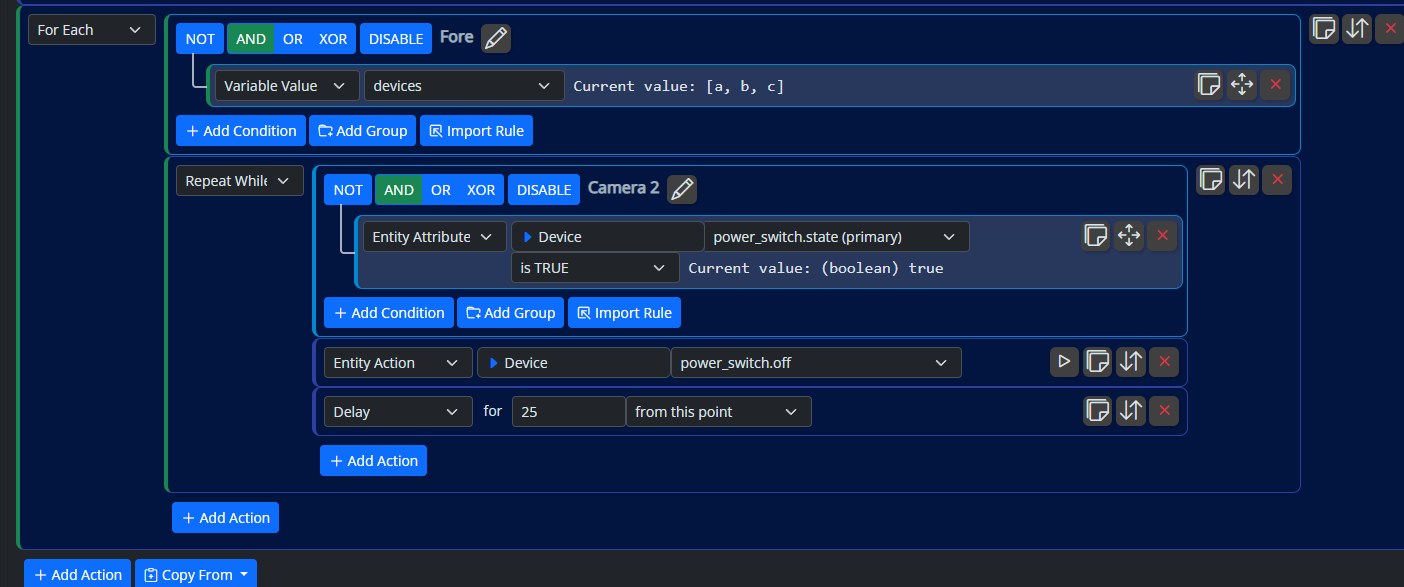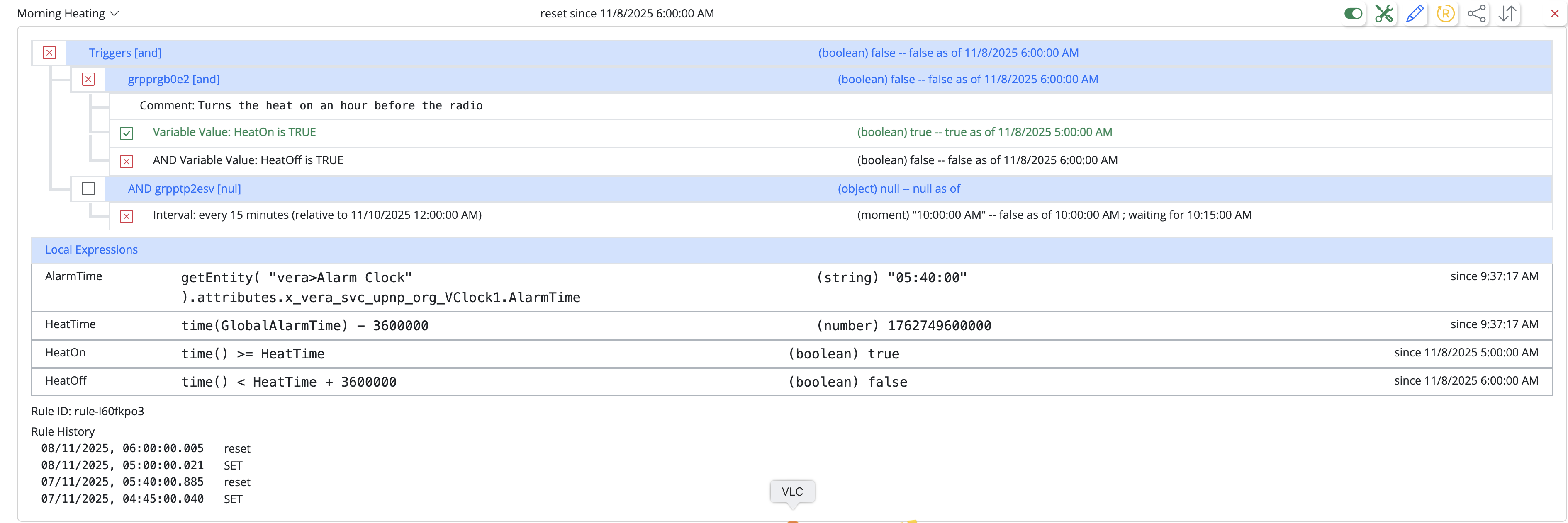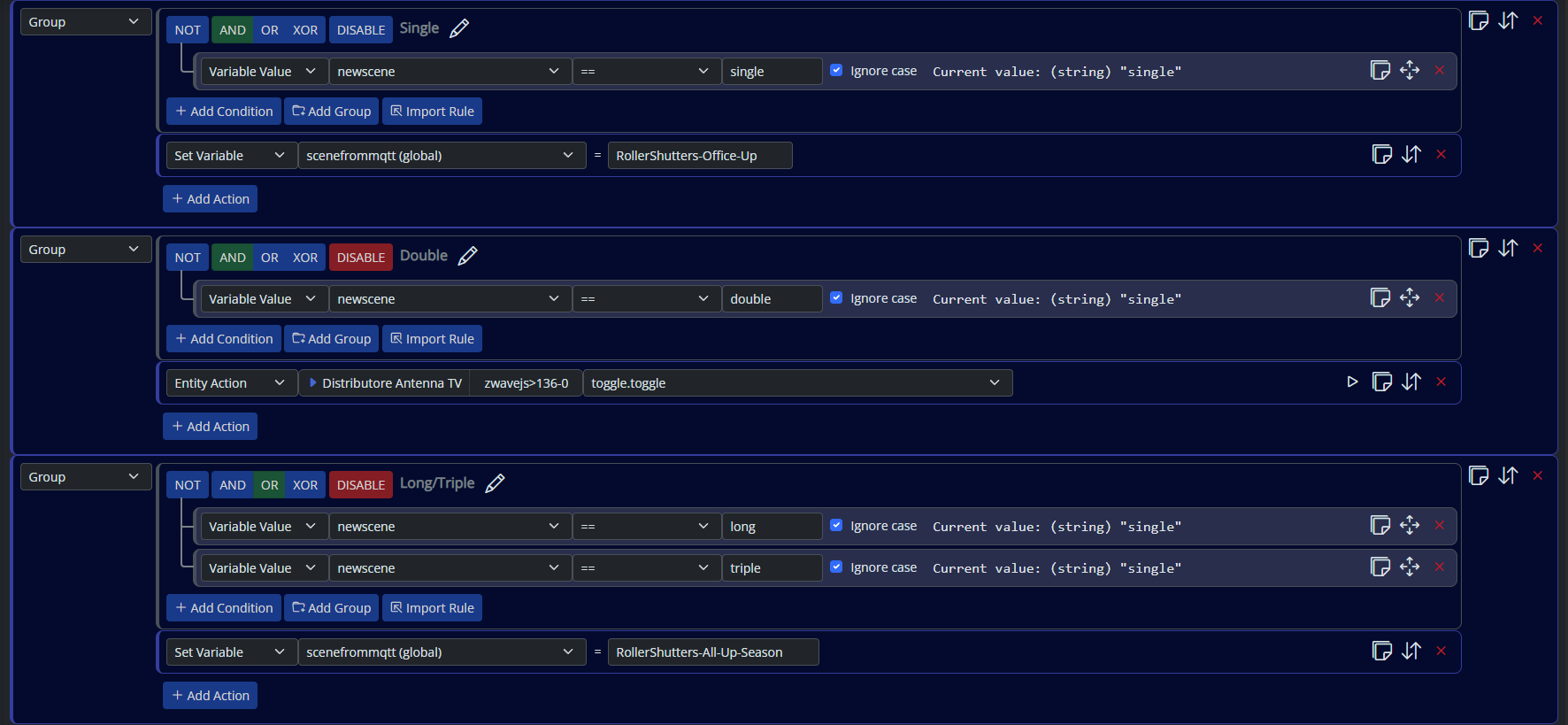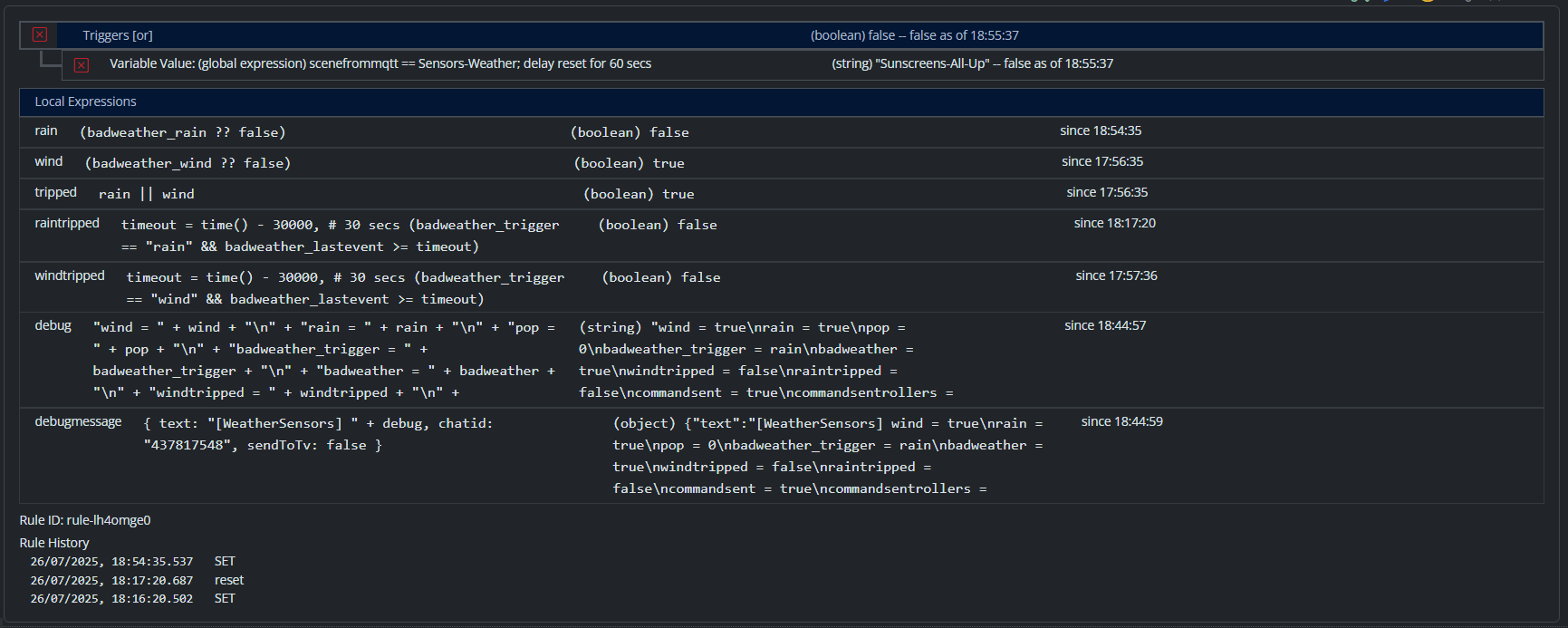About latching
-
According to the manual: "Latch - This output mode causes the condition to hold in true state until reset. Latched conditions are intended to be used in AND groups paired with other conditions. A latched condition is reset by any sibling condition going false (thus the group goes false)"
Seems that this sibling condition must already be true in order to (latching) condition to "activate", i.e. go to a latched state. If it's false, nothing happens. I guess by design.
But (don't know if this makes any sense for others) what if this latching condition could go to a latched state regardless of sibling's (initial) state (true or false), and then is reset when the sibling goes to false?
E.g. if sibling condition is initially false and changes to true, latching remains unchanged. And if initially true and changes to false, latching is reset (like it is now).
-
According to the manual: "Latch - This output mode causes the condition to hold in true state until reset. Latched conditions are intended to be used in AND groups paired with other conditions. A latched condition is reset by any sibling condition going false (thus the group goes false)"
Seems that this sibling condition must already be true in order to (latching) condition to "activate", i.e. go to a latched state. If it's false, nothing happens. I guess by design.
But (don't know if this makes any sense for others) what if this latching condition could go to a latched state regardless of sibling's (initial) state (true or false), and then is reset when the sibling goes to false?
E.g. if sibling condition is initially false and changes to true, latching remains unchanged. And if initially true and changes to false, latching is reset (like it is now).
@tunnus said in About latching:
Seems that this sibling condition must already be true in order to (latching) condition to "activate", i.e. go to a latched state. If it's false, nothing happens. I guess by design.
No something happens. A condition that is marked for latching can and will go true, regardless of the state of its sibling conditions and the parent group. It's just that it won't latch; it will go back to false when its test condition is no longer met, just as it would if it were not latching.
-
@tunnus said in About latching:
Seems that this sibling condition must already be true in order to (latching) condition to "activate", i.e. go to a latched state. If it's false, nothing happens. I guess by design.
No something happens. A condition that is marked for latching can and will go true, regardless of the state of its sibling conditions and the parent group. It's just that it won't latch; it will go back to false when its test condition is no longer met, just as it would if it were not latching.
@toggledbits yep, that's true, I should have been more exact
-
 T toggledbits locked this topic on
T toggledbits locked this topic on










